Keynote Speakers
(All speakers are sorted alphabetically)
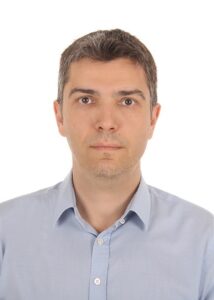
Can Özgür Çolpan
Mechanical Engineering Department, Faculty of Engineering, Dokuz Eylül University, Türkiye
Presentation Title: Green Hydrogen Production, Storage, and Utilization in Aviation Sector
The aviation industry is entering a decisive period as it confronts growing energy demand, declining fossil fuel reserves, and the urgent need to cut greenhouse gas emissions. Among emerging solutions, hydrogen stands out as a clean, versatile, and high-energy fuel capable of transforming the sector. This keynote will provide an overview of green hydrogen production, storage, and utilization pathways, with a particular emphasis on aviation applications. Renewable-powered electrolysis and advanced membrane reactor systems with integrated CO₂ capture will be highlighted as promising production approaches. Storage options such as compressed, liquid, cryo-compressed, and metal hydride systems will be compared in terms of their potential for aviation use. The talk will also examine integration strategies, from hydrogen combustion in modified gas turbines to the use of fuel cell systems for efficient onboard power. Drawing on techno-economic insights and recent demonstrations of hydrogen-powered aircraft and UAVs, the presentation will explore how green hydrogen can drive the transition toward low-carbon aviation, strengthen energy security, and support global net-zero ambitions.
Prof. Can Özgür Çolpan is a Full Professor in the Mechanical Engineering Department of Dokuz Eylül University in İzmir, Türkiye. Prof. Can Özgür Çolpan has conducted research in the field of fuel cells and hydrogen and the mathematical modeling of integrated energy systems. He has mainly carried out studies on the following topics: mathematical modeling and simulation of fuel cells and electrolyzers, techno-economic analysis of green hydrogen production, membrane reactors for hydrogen generation, power-to-gas systems, fuel cell vehicle powertrains, metal hydride hydrogen storage tanks, organic Rankine cycle-based systems, and electrochemical hydrogen compressors. He has co-authored more than 200 scientific products, such as peer-reviewed articles, patents, books, and book chapters. He has worked as conference chairman, technical chair, and organizing committee member in more than 30 conferences. He serves as a Board Member in the Turkish Hydrogen Technologies Association. He is the Assistant Subject Editor of the International Journal of Hydrogen Energy. In 2019, he won the Turkish Academy of Sciences Outstanding Young Scientist Award (TUBA-GEBIP) and METU Professor Dr. Mustafa N. Parlar Education and Research Foundation’s Research Encouragement Award.
1- Hydrogen production
2- Hydrogen storage
3- Hydrogen use
4- Fuel cells
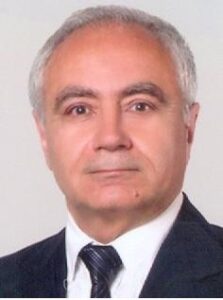
Chingiz Hajiyev
Istanbul Technical University, Faculty of Aeronautics and Astronautics, Türkiye
Presentation Title: Fault Detection and Isolation of Attitude Sensors Using Only Kinematic Relations
A single-frame method-aided filter is introduced in this paper to be employed solely with the kinematics model, excluding the dynamics of a nanosatellite. As attitude and rate sensors, three different kinds of sensors—gyroscopes, magnetometers, and sun sensors—are installed on board. Attitude angles and the gyroscope and magnetometer biases are estimated by the presented filter. The study recommends using the fault detection statistics based on the central Wishart matrix for sensor fault detection. The proposed sensor fault detection method is based on the innovations of the single-frame method-aided EKF. For fault detection statistics, this approach uses the diagonal elements of the central Wishart matrix consisting of innovation vector components. By converting the s-dimensional normalized innovation vector to s one-dimensional innovations, a sensor isolation technique is described, assuming that the impact of the malfunctioning sensor on its channel is greater than that on the other channels.
Prof.Dr. Chingiz Hajiyev, graduated from Moscow Aviation Institute, Moscow, Russia, with honors in 1981. He received his Ph.D. and DSc (Eng) degrees in Process Control in 1987 and 1993, respectively.
From 1987 to 1994 he worked as a Scientific Worker, Senior Scientific Worker, Chief of the Information-Measurement Systems Dept. at the ASPA “Neftgazavtomat”. From 1994 to 1996 he was a Leading – Scientific Worker at the Institute of Cybernetics of the Academy of Sciences of Azerbaijan Republic. He was also a Professor in the Department of Electronically-Calculated System Design, Azerbaijan Technical University, where he had been teaching 1995-1996.
He joined to Department of Aeronautical Engineering, Istanbul Technical University, Turkey in 1996 as a Professor. From 2016 to 2023, he was also Head of the Aeronautical Engineering Department. He is the author about 600 scientific publications including 15 books, 34 book chapters and more than 400 international journal and international conference papers. More than 100 scientific papers are published in the Science Citation Index Expanded (SCIE) journals. His research interests include attitude determination and control, fault diagnosis, fault tolerant control, Kalman filtering and integrated navigation systems.
1- Navigation
2- Fault diagnosis
3- Fault tolerant control
4- Kalman filtering
5- Satellite attitude determination and control
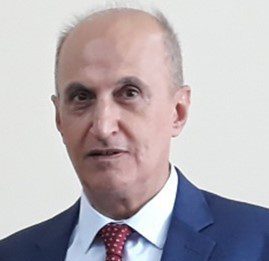
İslam İsgandarov
Head of Aerospace instruments Department, National Aviation Academy, Azerbaijan
Presentation Title: Circuit Design Features for Ensuring Reliable Protection in On-Board Electrical Equipment of Aircraft
The work analyzes methods and models that allow the creation of a structural model of an electronic protection system with multifunctional capabilities that ensure the prevention of damage to both power sources and electrical loads from various emergency situations. Protection schemes have been built for a 3-phase on-board network, for cases of overvoltage, phase failure, rephasing, overloads, short circuits, leaks and sharp drops in currents in load lines. It is shown that operational amplifiers are used to set more precise response thresholds, and for thresholds with a tolerance of more than 1%, it is possible to use NOT logic elements, which significantly simplifies the system as a whole. The developed interface circuit in accordance with the output digital combination of the system allows to transmit emergency information to other on-board systems. The control circuit of direct current lines is built on the same principle. The scheme of protection by deviations of the working frequency with the accuracy of 1% is built. If necessary, the response accuracy can be increased for any of the controlled parameters. Based on this scheme, it is possible to create reversible and irreversible protection systems that can be successfully used in aviation.
Graduated from the Sevastopol Instrument-making Institute (Crimea, Ukraine) in
1985. In the direction from 1985 to 1995 he worked at the Institute of Photoelectronics of Azerbaijan as an engineer, applicant. Since 1995 he has been working at the NAA of Azerbaijan Republic, in the positions of senior researcher, head of the laboratory, head of the department, since 2005 head of various departments. Currently, the head of the department "Aerospace instruments". Engaged in scientific and pedagogical work, supervises master's and doctoral dissertations, grant and state budget projects. Develops new educational programs and curricula, as well as work programs for special disciplines. Islam is engaged in research in the field of electronic and automated systems, aviation and aerospace engineering. His current project is "Modern Problems of Aviation Avionics Systems". His main research interests are in the development of models, sensors and devices for non-contact monitoring of electrical parameters, navigation system parameters, weight and center of gravity measurement systems. He is also engaged in research in the direction of studying and developing nanosensors for various fields. Also works on issues of processing signals received by radar and radio navigation systems using modern methods and means, in particular filters and MEMS modules.
- Non-contact measurements
- Modern sensors
- Improvement of avionics
- Aerospace devices
- Information and measuring systems based on MEMS
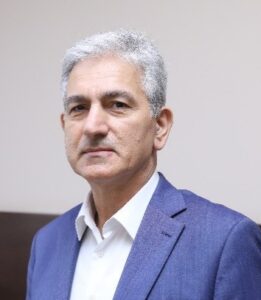
Khagani Abdullayev
National Aviation Academy, Azerbaijan
Presentation Title: Polymer coatings with critical coefficient of friction for aerospace applications
The purpose of the research is to create a technology for obtaining and applying polymer coatings with a critical friction coefficient, thermostable, impact-explosion-resistant, and high performance for use in the aerospace field.
Today, the high demand for multifunctional, special-purpose, and nanostructured coatings operating at high temperatures (minus 100°C to plus 1200°C) has made the creation of such a technology and its large-scale application relevant.
This work, as a complex scientific research and testing program, opens a completely new direction in the synthesis of thermostable polymer coatings, as well as physical, chemical, mechanical, mathematical, geometric, etc. methods in the synthesis of graphene, carbon nitride, exo- and endo-chlorinated compounds of carbon nanomaterials, in the preparation and application of nanocomposites and composite materials.
Khagani Abdullayev, PhD., Professor, is the Vice-Rector for New Technologies at the National Aviation Academy, Baku, Azerbaijan. He received his MSc degree in Radio Engineering from the Azerbaijan Technical University. After graduation worked at the National Aerospace Agency. He earned his Ph.D. in Technical Science, defending his dissertation on Avalanche Photo Receivers in Information Processing Systems. His research interests include radio and microelectronics, telecommunications, remote sensing and materials. He has been the leader and executor of many research and development works, including international projects. He is Editor-in-Chief of International Journal of Transportation Research and Technology (TransportTech). He is the author of more than 20 books and 100 scientific papers, including 2 international patents on the invention.
1- radio and micro electronics
2- telecommunications
3- optics
4- remote sensing
5- materials

Kwon Alex Heechoon Hakeem
Representative of National Association of Cognitive Science Industries, Seoul, South Korea
Presentation Title: Title
AI swarm drones are autonomous systems designed to operate collaboratively in dynamic environments. Using real-time data, they coordinate flight paths, share information, and adapt to terrain or weather, enabling efficient search, rescue, and surveillance missions.
Dr. Heechoon Kwon is an AI drone expert specializing in swarm intelligence and autonomous flight systems. His research focuses on search-and-rescue, defense, and industrial applications, advancing safe and efficient drone technologies.
1- Drone
2- Swarm
3- A.I
4- Group
5- Search
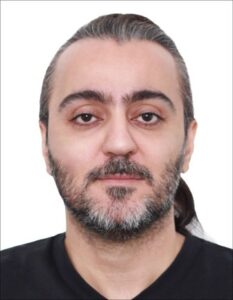
Mahdi Sahlabadi
Drone Lab SCH South Korea and Cybersecurity Division of UKM, Malaysia
Presentation Title: From Flight Logs to Green Skies: Petri Net and Process Mining Approaches for Sustainable Drone Systems
The rapid adoption of unmanned aerial vehicles (UAVs) across industries presents both opportunities and challenges for sustainability. While drones can reduce carbon footprints in logistics, inspection, and environmental monitoring, their operational efficiency, energy use, and security remain critical factors influencing long-term viability. This talk explores the integration of Petri net modeling and process mining techniques to design, analyze, and optimize sustainable drone systems. Petri nets provide a formal, graphical method to model UAV workflows, resource constraints, and energy consumption patterns, enabling precise simulation of mission lifecycles. Process mining complements this by extracting actionable insights from operational flight logs, revealing inefficiencies, bottlenecks, and deviations from planned eco-friendly behaviors. Together, these methods create a feedback loop: models guide sustainable mission planning, while real-world data refines and validates those models. Case studies illustrate how these approaches can optimize battery usage, reduce idle times, and ensure security measures do not compromise efficiency. The framework proposed not only addresses the technical dimensions of UAV sustainability but also offers a methodology transferable to other cyber-physical systems. By bridging formal modeling and data-driven analysis, this work moves us closer to green, secure skies powered by intelligent drones.
Dr. Mahdi Sahlabadi is a researcher and educator with expertise in cyber-physical systems, process modeling, and sustainable operations, with a particular focus on unmanned aerial vehicles (UAVs). His research integrates formal modeling techniques, such as Petri nets, with data-driven process mining to design, analyze, and optimize drone operations for both efficiency and sustainability.His work bridges the gap between theory and practice by coupling rigorous modeling frameworks with real-world operational data, enabling optimization of battery usage, mission planning, and resource allocation without compromising cybersecurity. With a publication record that includes peer-reviewed articles, conference papers, and collaborative industry reports, Dr. Sahlabadi’s scholarship reflects a multidisciplinary approach—drawing on systems engineering, operations research, and sustainability science. He has also worked closely with industry partners to translate research outputs into practical tools for drone fleet management and mission optimization.
- Petri Nets
- Process Mining
- Sustainable UAV Operations
- Cyber-Physical Systems
- Energy-Efficient Drones
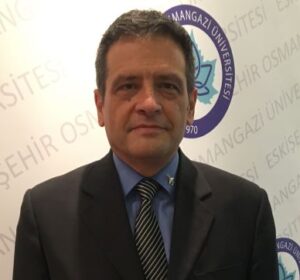
Melih Cemal Kuşhan
Eskisehir Osmangazi University, Aviation and Space Technologies Research and Application Center, Türkiye
Presentation Title: Sustainable Cork-Based Systems for Airliners
The progressive adoption of composite materials in commercial airliners has significantly transformed aircraft design and manufacturing, driven by the pursuit of weight reduction, fuel efficiency, structural performance, and sustainability. This paper presents a chronological investigation of composite applications in passenger aircraft, particularly focusing on narrow-body and regional jet programs such as the ARJ21, C919, SSJ100, and the military transport A400M. Emphasis is also given to the emerging use of cork-based composite systems, which offer eco-friendly alternatives and vibration-damping properties. Building on several author-led studies [1], this work integrates historical trends, structural roles, and the transition towards sustainable materials, highlighting key technological milestones and proposing a new perspective for the future of aerostructural innovation.
Melih Cemal Kushan is a Professor in the Department of Aeronautical Engineering at Eskisehir Osmangazi University. Professor Kushan has more than 200 publications on aviation and defense technology, and his publications have been cited in more than 3190 scientific studies. He has completed 21 research projects in the field of materials science and manufacturing of aerospace components. For his academic studies, he has been in more than 20 countries and also in Wollongong University and James Cook University Australia, International Turkmen Turkish University Turkmenistan, Vilnius Gediminas Technical University Lithuania.
1- General Aviation
2- Composites Materials
3- Defence/Aviation Materials
4- Armour Materials
5- Advanced Production Technics
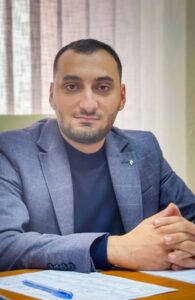
Mikail Qarayev
Mikail Garayev, Kharkiv Aviation Institute, Ukraine
Presentation Title: Title
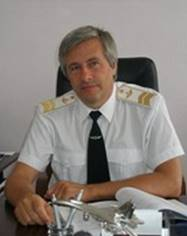
Oleksandr Zaporzhets
Institute of Aviation (Łukasiewicz Research Network – Institute of Aviation), Warsaw, Poland
Presentation Title: Global and local environmental priorities for new aircraft designs
EU EFACA (Environmentally Friendly Aviation for all Classes of Aircraft) project considers conceptual designing of two new types of aircraft – 80-seat regional jet with hydrogen-powered hybrid electric propulsion system (HEP) and 150-seat short-medium range jet with liquid hydrogen (LH2) fueling of the engines. For both types the Top-Level Aircraft Requirements (TLAR) are defined so as their conceptual aircraft layout, main dimensions and flight masses, schemes of power supply during the flight. Analysis of these baseline aircraft proved the reference aircraft for both of them: ATR72-600 for the HEP aircraft and Airbus-320neo for the LH2-fueled aircraft. The principles of aircraft fuel burn, emission, noise (with further impact assessment on environment) analysis and assessment of the baseline aircraft in comparison with reference aircraft in the EFACA project are formulated for three levels of their evaluation – aircraft, airport and fleet scenarios of current and future air traffic in the European perspective. For these purposes the VALDES Space was designed and developed further with detailed analysis of the aircraft design and flight performances influence on environmental impact assessment.
Between the 1978-2022 was employed in National Aviation University, Kyiv, Ukraine on the positions of Researcher, Leading Researcher, Professor, Head of the Chair, Director of the Institute, Vice Rector. From the April 2022 is employed in the Łukasiewicz Research Network – Institute of Aviation in Warsaw, Poland, on a position of the Area Research Leader – Professor. Degree of the Dr.Sc. was obtained in 1998 by the defending the thesis “Development of Models and Methods of Information Provision for Environment Protection from Civil Aviation Impact”. The title of Professor was obtained in 2004 by decision of the Academic Council of the National Aviation University. ICAO CAEP (Committee on Aviation Environmental Protection) member between 2010-2020 by nomination from Ukrainian CAA, currently a member of the MDG, WG2 and ISG groups of the CAEP. ECAC AIRMOD (Aircraft Noise Modelling Task Group) and EAEG (European Aviation and Environment Group) member from 2010. SARES member from 2015 and a member of the management board from 2023.
1- Aircraft
2- HEP hybrid electric propulsion system
3- LH2liquid hydrogen fueling of the engines
4- Fuel burn
5- Emission
6- Noise
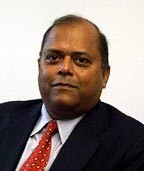
Ramesh Agarwal
Washington University in St. Louis, USA
Presentation Title: Application of a Co-Flow Jet Airfoil in the Development of an Efficient Transonic Truss-Braced Wing
The Transonic Truss Based Wing (TTBW) is a high aspect ratio wing that requires a truss to support its large span. The high wing design is beneficial since it allows for integration of efficient large diameter fans and open rotor propulsion systems such as the GE RISE engine concept. TTBW was developed by NASA/Boeing to improve aircraft performance by reaching a lift to drag ratio of ~26. This, along with weight reduction in comparison to cantilever wings reduces the fuel burn. Decades of airfoil design in both the military and commercial sectors have produced highly optimized airfoils for a range of flow regimes. Recent research has largely shifted towards the development of active-flow control (AFC) technology to further improve the airfoil performance. A variety of AFC techniques such as circulation-control airfoils, synthetic jets and plasma actuators have been shown to improve the maximum lift coefficient by delaying flow separation. In this presentation, AFC using a co-flow jet (CFJ) is applied to TTBW to further increase its L/D ratio and energy efficiency. CFJ is a zero-net mass flux active flow control technology that has been shown to improve the performance of supercritical airfoils at transonic conditions at lower angles of attack. A TTBW aircraft configuration is considered with 767 fuselage and Boeing SUGAR IV high aspect ratio wing planform of RAE 2822 supercritical airfoil section. CFJ is implemented at a jet injection location of 3% from the airfoil leading-edge and jet suction location of 75% from the leading-edge. The jet momentum value is chosen so that there is no choking at the suction slot. Computations are performed on unstructured grids at Mach 0.8 and 0.745 for angles of attack ranging from one to five degrees using the CFD solver Ansys Fluent. The RAE 2822- TTBW without CFJ achieves a lift to drag ratio of 21.68 but with the addition of CFJ, this increases to 26.76.
Professor Ramesh K. Agarwal is the William Palm Professor of Engineering in the department of Mechanical Engineering and Materials Science at Washington University in St. Louis. From 1994 to 2001, he was the Sam Bloomfield Distinguished Professor and Executive Director of the National Institute for Aviation Research at Wichita State University in Kansas. From 1978 to 1994, he was the Program Director and McDonnell Douglas Fellow at McDonnell Douglas Research Laboratories in St. Louis. Dr. Agarwal received PhD in Aeronautical Sciences from Stanford University in 1975, M.S. in Aeronautical Engineering from the University of Minnesota in 1969 and B.S. in Mechanical Engineering from Indian Institute of Technology, Kharagpur, India in 1968. Over a period of forty-five years, Professor Agarwal has worked in various areas of Computational Science and Engineering – Computational Fluid Dynamics, Computational Acoustics and Electromagnetics, Control and Systems Theory, and Multidisciplinary Design and Optimization. He is the author and coauthor of over 600 journal and refereed conference publications. He has given many plenary, keynote, and invited lectures at various national and international conferences worldwide in over sixty countries. Professor Agarwal continues to serve on many academic, government, and industrial advisory committees. Dr. Agarwal is a Fellow thirty professional societies including the Institute of Electrical and Electronics Engineers (IEEE), American Association for Advancement of Science (AAAS), American Institute of Aeronautics and Astronautics (AIAA), American Physical Society (APS), American Society of Mechanical Engineers (ASME), and American Society for Engineering Education (ASEE). He has received many prestigious honors and national/international awards for his research contributions including the AIAA Reeds Aeronautics Award, SAE Medal of Honor, ASME Honorary Membership and Honorary Fellowship from Royal Aeronautical Society.
1- Transonic Truss based Wing
2- Co-Flow Jet
3- Active Flow Control
4- High L/D Ratio
5- Large Aspect Ratio
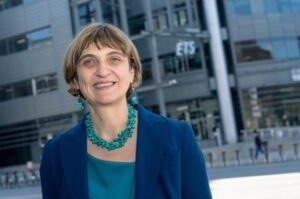
Ruxandra Mihaela Botez
École de technologie supérieure ÉTS, University of Québec, Montréal, Qc., Canada
Presentation Title: Unmanned Aerial Systems UAS-S4 and UAS-S45 Improvement Design Aspects
This research was done with the aim to improve the aerodynamic performance of Unmanned Aerial Systems UAS-S4 and UAS-S45, developed by Hydra Technologies in Mexico, in terms of drag reduction, increase of lift-to-drag ratio, delay of flow transition from its laminar to turbulent regime, lift and maximum lift increase by changing the shape (morphing) of the UAS-S4 and UAS-S45, its wing or airfoil using actuators, and control systems. Various methodologies and results will be presented for this multidisciplinary work in various fields: aerodynamics, structures and controls.
Dr. Ruxandra Botez is Full Professor at ETS in Canada since 1998. Ruxandra is the Canada Research Chair Tier 1 Holder in Aircraft Modeling and Simulation Technologies since 2011, and she is the Head of the Laboratory of Applied Research in Active Controls, Avionics and AeroServoElasticity LARCASE since 2003. Ruxandra is a Fellow of the American Institute of Aeronautics and Astronautics (AIAA), Canadian Academy of Engineering (CAE), Canadian Aeronautical Society Institute (CASI), Royal Aeronautical Society (RAeS) and other organizations. Ruxandra is the Editor-in-Chief of the INCAS Bulletin and Associate Editor of the Aeronautical Journal and other journals. Ruxandra published more than 200 archival original journal articles, 320 conference papers and 7 invited book chapters. Ruxandra and her team have obtained more than 70 awards; she also gave more than 50 invited speaker presentations. Ruxandra’s projects were and are realized in collaboration with international teams from Bombardier, CAE, CMC Electronics, Bell Helicopter Textron, Thales Aerospace, GlobVision, FLIR Systems, IAR-NRC, Presagis and NASA, Alenia and CIRA, Hydra Technologies, DLR, INCAS and other companies.
1- Aerodynamics
2- Controls
3- Aero-Structural Optimization
4- Aeroelasticity
5- Unmanned Aerial Systems UAS

Ravi Rajamani
drR2 Consulting, United States
Presentation Title: Update on the State of the Electric Aircraft Industry
The electric aircraft industry has grown by leaps and bounds in the last decade, but it has also consolidated in many ways. This talk will try and describe the current state of the industry and where it might be headed.
Dr. Ravi Rajamani has been active in the aircraft propulsion area for more than three decades. Before his consulting job he worked at leading engine companies like GE and P&W. He has published eight books, many book chapters, journal papers, conference proceedings, and patents. He got his basic engineering degrees in India and his PhD at the University of Minnesota. He is a fellow of IMechE and of SAE International, and he is a member of the Connecticut Academy of Science and Engineering. Recently, he assumed the presidency of the Independent Data Consortium for Aviation (IDCA), developing data governance standards for the aviation industry.
1- Electric Aircraft
2- Certification
3- Hybrid / All-Electric
4- eVTOL
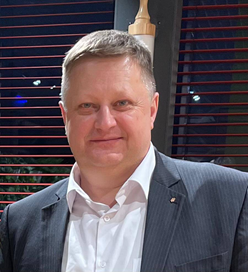
Sergii Boichenko
National Technical University of Ukraine “Igor Sikorsky Kyiv Polytechnic Institute”, Head of the Department;
Scientific and Technical Union of Chemmotologists, Head of the Union, Ukraine
Presentation Title: Efficiency of Power Modes in Hydrogen Fuel Cell-Powered Unmanned Aerial Vehicles
Hydrogen fuel cell efficiency in UAVs varies significantly with power mode, with maximum efficiency of around 47% for commercial systems, dropping at low power due to unreacted hydrogen losses and increasing at high power due to heat generation. Hybrid systems combining fuel cells with batteries or supercapacitors improve overall efficiency by providing power surges and optimizing energy use in different flight phases, such as using the battery for rapid power demands and the fuel cell for steady flight.
Date of birth – 12 April 1968;
Head of the Scientific and Technical Union of Chemmotologists.
Supervisor of the Interactive Laboratory for Diagnosing Operational Materials in Energy and Transport,
Head of the Department of Automation of Electrical and Mechatronic Complexes,
Institute of energy saving and energy management,
National Technical University of Ukraine “Igor Sikorsky Kyiv Polytechnic Institute”
The main Scientific direction is the Efficient and Rational Use of Fuels, Lubricants & Technical liquids (Сhemmotology). Аctively working above introduction of Alternative Fuels in an Aviation and increase of Ecological properties of Fuels, Lubricants & Technical liquids. Increase the effectiveness of the prevention of motor fuel losses from evaporation during various technological operations.
I am mastering a new direction – Ekologistics (reversible logistics), utilization and recycling of transport’s operational materials.
Started working experience in 1990-1991 at the Civil Aviation Plant № 410. In 1998-2006 I was the head of the Petroleum Products Testing Center of the Ukrainian Center for Aviation Chemmotology and Product Certification «UCACH-SEPRO». In 2005 I was the head the Ukrainian Research and Training Center of Chemmotology and Certification of Fuel and Lubricants and Technical Fluids. In 2007 I founded and became the head of the chemmotology department of the National Aviation University. At the same time he was appointed Deputy Vice-Rector of the University for scientific work. Since 2011, after the reorganization of the Department of chemmotology, I headed the Department of Ecology at the Institute of Environmental Safety of the National Aviation University.
05.2018–02.2019 – Director of the Education-Research Institute of Environmental Safety
(National Aviation University).
02.2019–11.2020 – Dean of the Faculty of Environmental Safety, Engineering and Technology (National Aviation University).
11.2020–30.06.2021 – Supervisor oftheUkrainianResearchandEducationalCenter
of ChemmotologyandCertification ofFuels, Lubricants and Technical liquids
01.09.2021–till now – National Technical University of Ukraine “Igor Sikorsky Kyiv Polytechnic Institute”, Supervisorof the Interactive Laboratory for Diagnosing Operational Materials
in Energy and Transport
1 –Sustainable Aviation Fuels
2– Chemmotology
3 – Aviation fuel supply
4 – Chemmotological reliability
5 – BioJet
6 – Gasoline (reformulative)
7 – Hydrogen -Powered Unmanned Aerial Vehicles
8 – Fuel Cell
9 – Unmanned Aerial Vehicles
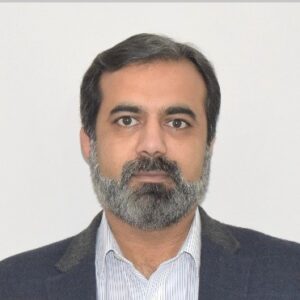
Zeeshan Rana
Prince Mohammad Bin Fahd University, Al-Khobar, Saudi Arabia
Presentation Title: Assessment of the Operability of Autonomous Ground Refueling System for Civil Aircrafts
This study evaluates the operability of an autonomous ground refuelling system by benchmarking a custom visual trajectory planning control system against the Leica Absolute Tracker AT901. The proposed system integrates a deep learning-based method with the Intel® RealSense™ D435 Stereo Depth Camera to detect and localise the aircraft’s refuelling adaptor in 3D space. The adaptor’s position and orientation are transmitted to a robotic manipulator, enabling fully automated refuelling operations. The RealSense™ camera generates point cloud data, which is processed by deep learning algorithms to ensure accurate adaptor detection and localisation. To validate the system’s precision and reliability, results from the visual trajectory planning control system are compared with measurements from the Leica Absolute Tracker AT901, a high-accuracy metrological tool. Any deviations are analysed and corrected to guarantee consistent localisation performance. Experimental findings demonstrate that the system achieves localisation errors as small as 0.666089 mm at 57cm from the adaptor, confirming its high accuracy.
Dr Zeeshan Rana has background in Mechanical and Aerospace Engineering. He obtained his PhD in Computational Methods focusing on high fidelity MUSCL schemes for shock capturing methods from Cranfield University. Dr Rana is currently working at the Prince Mohammad Bin Fahd University (KSA). Previously he had a long and established career spanning over 14 years at the Cranfield University (UK) where he contributed extensively to academia and research. He had been the Director of postgraduate program at Cranfield University (UK) for several years. Dr Rana’s focus in research is in renewable/green energy, sustainable aviation, heat transfer, fluid/aerodynamics and use of Artificial Intelligence especially deep learning in aviation sector to improve the processes.
1- Computational Methods
2- Computer Vision
3- Sustainable Aviation
4- Renewable/Green Energy
5- Artificial Intelligence/Deep Learning




